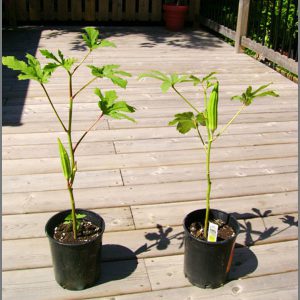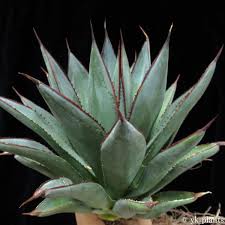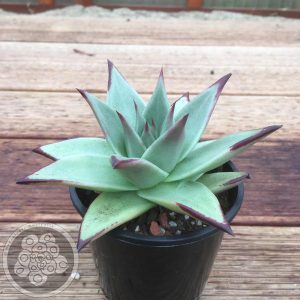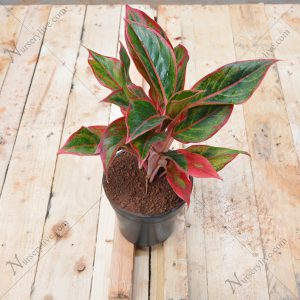Works exactly the same as recent products but displays products which have been set as “featured”. In this example, the shortcode is saying show 12 featured products in 4 columns.
Abelmoschus Esculem
Okra is a cultigen (a plant that has been altered by humans through a process of selective breeding). The exact origin of okra is unknown, but it is thought to have come from Africa, where it has been grown as a crop for centuries. Evidence suggests it was grown in Egypt as long ago as 2,000 BC. Today it is widely cultivated for its edible green fruits, which are harvested when immature (after 3-5 days of development), and are infamous for their slimy mucilage.
AED 0.00Read more
Acacia arabica
Acacia arabica Acacia arabica is a slow growing, long lived tree usually growing 2.5-7 m tall, but occasionally reaching up to 20
AED 100.00Add to cart
Aeschynanthus Radicans
Keep the room temperature between 65 and 70 degrees Fahrenheit during the spring, summer, and fall. As well, maintain a room humidity of between 25 and 49 percent.
- In the winter, keep the room temperature closer to 65 °F (18 °C) to encourage the plant to produce new flower buds.
- Do not hang the plant near a heating or air conditioning vent or near a doorway where it will be exposed to cold drafts in the winter.
- To make aged water, simply fill an empty milk jug or watering can a few days before the lipstick plant needs to be watered. Then fill the container again right away after watering the plant. This way, you will always have aged water ready for the plant.
- Allow the top 1 to 2 inches of potting mix to dry before watering in the winter. Keeping the lipstick plant a little dryer during the winter will result in more profuse blooming in the spring and summer.
AED 100.00Read more
African milk tree cactus
african milk tree cactus African Milk Tree (Euphorbia trigona) is a tall, rugged, easy-care plant with thorns. It should come as no
AED 50.00Read more
Agave blue glow
Agave is not a difficult plant to grow. They’re slow-growing and dramatic and will even thrive on a bit of neglect. If you’re the type of person who likes to fuss with houseplants and water a lot, Agave is probably not the plant for you. If, however, you’re the type of person who likes to set it and forget it, and you have a sunny window, Agave might the way to go. Be aware that some of the large varieties will eventually outgrow your room (unless you have a large greenhouse), and Agave can be aggressive. They have irritating sap and sometimes very sharp thorns that can cause injuries to small children and even pets.
In general, Agave do not need to be repotted every year. Most of the species commonly found in cultivation grow very slowly and will take a long time to outgrow their pot. It’s also best to handle your Agave as little as possible, since they do not like to be disturbed. When you do repot, refresh the spent soil with new potting mix and make sure the plant is firmly anchored in its pot
AED 0.00Read more
Agave Green ‘Real Feel’
Agave Green ‘Real Feel’
About 60 different plant families contain succulents. Succulent plants often store water in structures such as the leaves and/or stems resulting in parts that are more than normally thickened and fleshy. These parts by retaining water give the plants an advantage in arid climates. In families such as cactaceae, (cactus), Agavoideae, (Agave), and Crassulaceae (crassula), most plants are succulents. The habitats of these water preserving plants are often in areas with high temperatures and low rainfall.
AED 550.00Add to cart
Agave Red Edge
Agave plants need a spot in full sun to partial shade. The hotter the climate, the more shade they can handle.
Established plants need watering once every couple of weeks if at all. Deeply water, container grown Agave plants when the top inch or two of the soil dries completely.
AED 200.00Add to cart
Agave red edge (blue glow)
Smooth, blue-green leaves with yellow-edged, red margins form a single, symmetrical rosette. Each leaf tip bears a short red spine. A comely choice for sunny, low water gardens in warm coastal or humid Mediterranean-like climates. Handsome in dry desert gardens as well, provided some shade and supplemental water. Evergreen.
AED 0.00Read more
Agave Varigated ‘Real Feel’
Agave Varigated
About 60 different plant families contain succulents. Succulent plants often store water in structures such as the leaves and/or stems resulting in parts that are more than normally thickened and fleshy. These parts by retaining water give the plants an advantage in arid climates. In families such as cactaceae, (cactus), Agavoideae, (Agave), and Crassulaceae (crassula), most plants are succulents. The habitats of these water preserving plants are often in areas with high temperatures and low rainfall.
AED 550.00Add to cart
Aglaonema red
Light: The darker green varieties of aglaonema can grow in near shade, while the variegated varieties require brighter light. Do not expose any aglaonema to Direct Sun
Water: Water thoroughly in the summer and mist the plant often to raise the humidity. During the winter, reduce watering but do not let the plant dry out completely.
Temperature: These plants do not like cold drafts or temperatures below 65 F. Be sure to keep them away from drafty windows or vents and the warmer the spot you can find for them, the better.
AED 55.00Add to cart
Aglaonema silver queen
WATERING Aglaonema Silver Queen – If you place your Aglaonema Silver Queen in high light, you can allow the potting mix to dry down approximately 1/2 to 3/4 of the way before watering thoroughly. In a lower light situation, allow soil to dry between waterings.
TEMPERATURES for Aglaonema Silver Queen should be at a minimum of 60°F. It is easily damaged by cold drafts and temperatures. Be sure to keep away from cold spots and drafts and move away from cold window panes in the winter time.
PLACE Aglaonema Silver Queen in any shaded location. Full sun, especially through glass, will most likely burn the exposed leaves. This plant will survive in low light For a really nice looking plant, try to provide
AED 55.00Add to cart
Alamanda cathartica
alamanda cathartica Growth Form: A woody and evergreen vine. It can grow up to 6 m in height. Foliage: The leaves are borne in
AED 20.00Add to cart













